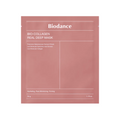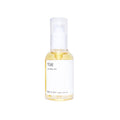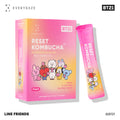The Ingredients You Want to See on Your Products
Recently I have been writing the articles about new products only. I know it’s exciting to see new products and frankly speaking, I really enjoy them as well but I think it is more important to know what you apply on your skin.

So, this article might be a boring and technical one but I think it will be a good one. Practically, a cosmetic product is a sophisticated solution or a mixture of different types of “chemicals.” Well, the term chemical is not appealing at all, but we should know that they actually improve the skin. Again, as a scientist, I can assure you, 1% of active ingredient can do million times more things on your skin than ppm level of “miracle extracts.” I am not saying the “organic, chemical free” cosmetics are bad. They simply don’t do anything, if they don’t contain an adequate concentration of active ingredients. If you want to benefit solely from the phytochemicals, the products should have at least 70~80% of the plant extract and claimed results are not even guaranteed if they are not proven pharmaceutical herbs like Centella Asiatica. Active ingredients are verified by millions of scientific studies and the safety of those ingredients are thoroughly tested. So, in this article, I prepare a list of ingredients that you want to see on your products.
1. Niacinamide
I think Niacinamide is a ubiquitous brightening ingredient in most of the brightening products. It is also known as vitamin B3 or 32-pyridinecarboxamide. Numerous research suggests niacinamide inhibits the melanosome transfer or melanogenesis, meaning, it prevents the dark-spots appear on the skin or new formation of the color pigments on the skin. Some result suggests the high concentration of niacinamide may result in similar brightening effect with hydroquinone. It also shows the increase in skin immune system and has an anti-inflammatory function, so it is used for acne treatment as well in some cases.

The most appealing aspect of niacinamide is that it is well-tolerated in most of the skin type, even in the relatively high concentration. In Korea, usually 2% to 5% is used and some foreign brands such as the Ordinary or Paula’s Choice use relatively aggressive concentration – 10%. Even though it is very rare, some people have an allergic reaction to niacinamide in high concentration, so if you have specifically sensitive skin, please test before you purchase any product.
Mediheal W.H.P White Hydrating Charcoal Mineral Mask
While niacinamide brightens up the pigmentation, sodium hyaluronate and xylitol complex deeply hydrate the skin.
2. Sodium Hyaluronate, hydrolyzed hyaluronic acid & other HA derivatives


When it comes to the hydration, I think hyaluronic acid is the absolute ingredient out of all other new moisturizing factors, a non-sulfated form of glycosaminoglycans. If you are a fan of Elensilia’s Original Repair Cream, you will be familiar with this glycosaminoglycans. Hyaluronic acid is a sub-family of glycosaminoglycans and has excellent water retention property, meaning it can hold moisture on the skin very effectively. Because of its aggregative property, it leaves very sticky texture on the skin so low molecular form of hyaluronic acid (sodium hyaluronate) is commonly used in cosmetics but if you want to benefit from hyaluronic acid, it’s better to use large molecular form, since it can hold up more moisture around them. (of course, if you can tolerate the stickiness.) There are numerous researches suggesting wound-healing property of hyaluronic acid, so it has a repairing property as well. Since it is a naturally occurring molecule in our body, the pure form of hyaluronic acid is also used in cosmetics, meaning up to 100%. But in higher concentration, hyaluronic acid sometimes induces dry patches, by sucking up the moisture from the skin in some condition, so please be informed it’s not “the higher, the better.”
Neogen Code 9 Black Volume Cream
3 molecular size hyaluronic acids deeply hydrate and plump up the skin, while anthocyanin-rich black fruit extracts fight against reactive oxygen species.
3. Vitamin C Derivatives – ethyl ascorbic ether / MAP (magnesium ascorbyl phosphate / ascorbyl tetraisopalmitate / ascorbyl glucoside )

Probably, vitamin C has the longest history as an active ingredient in skincare products. Vitamin C is an extremely well-studied ingredient for its anti-oxidant, brightening and firming property (by upregulating collagen synthesis). If you are an ingredient savvy person, you probably know vitamin C is extremely weak against oxidation, especially in water suspension. So it is often converted into the dihydroxy ascorbic acid (you can easily observe this if you use water-based, un-stabilized vitamin C solution turns into yellow or orange color.) Well, there is a lot of discussion going on, but it is definitely less potent than ascorbic acid. So, various labs introduced several stabilized derivatives such as ethyl ascorbyl ether, MAP, ascorbyl tetraisopalmitate and ascorbyl glucoside. MAP and ascorbyl glucoside are especially stable in water solution, so they are often used in cosmetics. Other stabilized form is also available; such as oil soluble form ascorbyl tetraisopalmitate. Although all of these derivatives are stable and significantly less irritating, they should be converted into ascorbic acid first, meaning there are differences in potency. Generally, ascorbic acid is slightly irritating, so try out several products before you settle.
This mask is a very smart form of vitamin C product. A’pieu embedded powder form of vitamin C on the mask sheet, and you can soak the mask solution right before you use. So, practically Apieu designed this mask so that you can directly benefit from the non-oxidized, powder form of ascorbic acid.
4. Vitamin A, Retinol & its derivatives (Retinol, retinyl palmitate, and retinyl acetate)

Retinol is a probably the most common ingredient in anti-aging creams. Practically, vitamin A refers to the various organic compounds such as retinol, retinal and retinoic acid. The rule of vitamin A derivatives in skincare are definitely well-studied but the mechanism is still poorly understood. Well, it definitely upregulates the cell-cycle and works on cell-differentiation of the skin cell. Numerous researches showed the improvements in the signs of aging with the topical treatment of retinol or other derivatives, yet retinol has the very significant downside. It may induce irritations, in a relatively higher frequency than other active ingredients. Normally, Korean companies use 0.5% to 1% concentration of retinyl palmitate, and other forms are available on the market as well. Recently, there are other forms of retinoids - granactive retinoid (Hydroxypinacolone Retinoate.) Some companies claim that it is less irritating and as potent as retinoic acid, but there are not so many researches available on this new form of retinoid, so I won’t discuss further.

Banobagi Vita Genic Lifting Jelly Mask
Vitamin complex with niacinamide, panthenol and sodium ascorbyl phosphate along with retinyl palmitate improves the signs of aging and revitalizes the skin.















